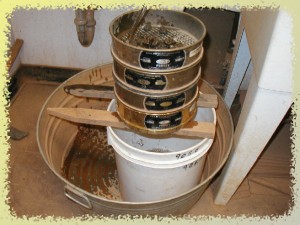Comparison of Sieve analyses, laser diffraction, image analyses and FBRM for the determination of particle size distributions part 6
Friday, January 13th, 2012 12:40:24 by Ahmed Tariq
Comparison of Sieve analyses, laser diffraction, image analyses and FBRM for the determination of particle size distributions part 6
The results obtained from LD instrument as the conversion has been done from a number-based PSD to volume-based PSD for the IA measurements. The IA and LD gave very similar results for spherical particles, as these can reasonably accurately show relative
volume fractions for individual particle sizes. IA produced the narrowest PSD as compared to other techniques which could be the result of limitation of image processing and analyses software used.
The FBRM results were obtained by the converting number-based CLD to its volume-weighted CLD without considering the translation of CLDs into PSDs. The use of different statistics was evaluated to find the most suitable statistics which resemble to the PSDs
results obtained from other techniques
The distribution in Figure 10 and 11 show un-weighted (UW), Length-weighted (LW), Square- Weighted (SW) and Cube-weighted (CW) Chord Distr- ibutions. The Weighted Chord Distribution (WCD) was obtained via the WCD equation
Where ni is the average number of count in a channel and
Mi is midpoint of the channel size, which shows how different type of weight procedures was used to calculate weighted distribution by varying ?:
By comparing, it can be confirmed that the square weighted Chord Distribution gives most similar results to those obtained by other techniques for the same individual sieved sample (125—150 µm).
The square-weighted Chord Length Distribution (SWCLD) by FBRM is plotted with the PSDs obtained by the other techniques, and it can be seen that the results still have some discrepancies between them.
The parameters, such as particle’s optical properties, dispersion of particles, the solvent used and the conditions of operation (such as stirring speed) can influence the results obtained from FBRM. It has also been proven that the transparent particles
(such as glass beads) do not possess either sufficient pulse strength or a short enough rise time, and therefore the FBRM instrument is proven to undersize the particles (Sparks and Dobbs, 1993; Tadayyon and Rohani, 1998).
Continued in part 7
Tags: Comparison, FBRM, image analyses, laser diffraction, October 2012, Science, Sieve analyses, Swiss authorities, technology, The Italian JobShort URL: https://www.newspakistan.pk/?p=9116

















